Hello friends,
I am doing this post for 3 reasons:
1. To make sure that any newbies reading this post don’t go through, and put their fish through what we have. It’s likely that some of you may come across unscrupulous pet shop owners like we did.
2. To highlight some of the observations we have made from our experiences, which may be use to other newbies. And if our interpretations/ observations are incorrect, to request the experts on the forums to correct them.
3. To ask the experts on the forums if we’re going in the right direction. Most unfortunately, we have no personal access to any experts where we live. We are desperate to save our remaining fishes. :bowing:
We live in a rural town in India where there are only two aquarium dealers. I’m going to call them that because that’s what these two guys are. Just dealers. Genuine pet shop owners know about and care for pets!
Anyway, with no experience whatsoever in our family regarding pet-keeping, we were misled by some friends into believing that there was nothing to an aquarium, and that it was simply a glass box with some water and some fish in it. We were encouraged to just ‘go and get one today.’
And that’s what we did. On 1st November 2009, we went to one of the aquarium dealers in our town and he assured us that he would do the needful. We chose a 24 (length) x 15 (height) x 12 (depth) inch glass aquarium holding 16 gallons of water gravel, some plastic plants and a couple of decorations. With it came a sponge filter and an under-gravel filter, an air pump and aquarium lamp. There was no discussion on our prior experience, requirement for a heater, maintenance etc. And there was absolutely no talk of the foremost important procedure for a new aquarium i.e cycling of the tank.
Then with a brilliant smile, he waved his hand at the overstocked aquariums behind him and told us to choose whichever fish we wanted. There was no advice on which fish would be suitable for beginners, their ultimate adult size, the maximum inches of fish that we could out in our aquarium, their inter-breed compatibility, their specific care-needs etc. ‘Choose and thou shalt get!’ was his motto. Within minutes, he had sweet-talked us into buying 2 fantail goldfish, 2 plecos, 2 marble angelfish, 2 silver angelfish and 2 tangerine sword-tails. When I asked him if there were any specific instructions regarding any do’s and don’ts, he again waved his hand and said there wasn’t anything of note, and to call him in case anything was required.
His man then came over to our house, set up the glass box, did in a few seconds what was probably supposed to be the careful washing of the gravel, decorations and plastic plants. Then he put it all in. Then he took water freshly just taken from the tap, added a few drop of dechlorinator, did not even wait for the requisite 15 minutes and poured it into the box. Then he added all the above fish into the aquarium along with the same water they were transported in, from the shop. That’s TEN fish going into a brand-new, non-cycled aquarium, all at the same time!
I cringe at the memory of that action even today. He had also sold us a box of flake food and frozen worms. He told us to feed the fish twice a day, as much as they’d finish in 5 minutes.
The next day, we went to the other aquarium dealer in the town to get a few other decorations and to see if he had any more variety of fish. Even after listening to what we done, this man also conned us into buying further, 2 silver dollars, 2 mickey-mouse platys and 2 snails! Upon hesitatingly asking whether adding all these would be all right, this guy also smiled patronizingly and told us that our aquarium was a ‘big’ one and we could put in about 20-22 fish if we wanted!
I can imagine all you fish-lovers recoiling at this tragically true horror story.
The first two days were pure bliss for us. We would sit for hours watching and discussing the gorgeous fish swimming around in front of us. On the second day, we found ourselves amused at how some of them were cutely rubbing themselves on some of the hard decorations in the aquarium. Little did we know at that time, that this was one of the early signs of stress, and even worse, what was to follow next.
It was on the third day, that we noticed that our silver dollars looked like they were sprinkled with fine grains of salt. The goldfish followed suit. And so did the platys. The dreaded nemesis of new aquarium owners, the parasite Ich had struck. We were still not fully aware of the danger, we just knew something was wrong. We took the fish to the first dealer and after a cursory look he said that ‘sometimes these things happen. In fact they don’t have much’. He then told us that we should add a ‘handful’ of aquarium salt, a ‘few crystals’ of potassium permanganate, a few drops of methylene blue and that now ‘it was time’ to install a heater and turn up the temperature. He did not tell us the exact dose of the salt or pot. permanganate or the methylene blue.
On the 6th day, one of the plecos died. And on the 7th day, one of the goldfish died. For no apparent reason. The pleco didn't even have any white spots on him and the white spots on the goldfish were just 2 or 3 in number. We were morbidly horrified. We rushed to the dealers who casually told us, and I quote, ‘It’s normal for fish often die like that.’ (??!!!):mad2::mad2::mad2:
We contacted our friends and they also reported huge losses of fish, which they were also given to believe, is ‘normal’.
We decided that enough was enough. Then we decided to turn to the Internet for help. Something I confess, we should have done in the first place. Ignorance is all I can plead because we really did not know the wealth of information that exists on the topic. Besides, we had been assured by the dealers that they were experts and we should ‘leave it to them’ to look after things.
Everything we did was wrong. From the information on the Internet, I'm guessing those two poor fish died from ammonia toxicity. We felt responsible for the death of those beautiful fish. Needless to say, we felt like sh*t!!!:wall:
Then we decided to act proactive and do something to try and save our remaining fishes. We read up whatever we could find on the Internet on an emergency basis and took the following steps.
This is where I request all the experts to give their feedback whether we’re going in the right direction and what we can do further. :1zhelp:
What we have done over the last week:
We installed a thermometer and heater and turned up the temperature to 86 deg F. We’ve also added sea salt at 5-10 tsp dissolved in some water taken from the tank itself everyday. By tomorrow, we shall have achieved 2.5 tsp per gallon. We’ve watched the fish closely for signs of stress but they seem to love it. The Ich spots disappeared on all the fish within a couple of days. They recurred in the silver dollars and one platy after a couple of days but now they are gone and have not recurred. As advised in the posts on AC, we intend to keep this salt and temperature condition for a couple of weeks more to eradicate any surviving parasites. The fish are feeding well and are active.
One point of note (which all experts probably know anyway!) is that the active dots of Ich are white and well defined. They heal by become flatter, and the margins become more ill defined before disappearing completely.
I hooked up the pump/filter to alternate inverter-battery back up. We have heavy power cuts in these rural parts. Then I added a more powerful air pump for increasing the aeration, to compensate for the decreased oxygen availability caused by the raised temperature.
We isolated the second goldfish in a different tub immediately after the first one died because he too had started showing whitish patches on his back and dorsal fin. This ‘quarantine tub’ has a small air-stick/ bubble wall, but nothing else. We added salt to 2.5 tsp/gallon but there is no heating system. It also does not have gravel or any type of filter. Fortunately he is doing well. First all the whitish patches on his back turned black, which I believe is a sign of healing of ammonia burns. Now they too are slowly fading in colour. Here’s what he looked like about 5 days ago:
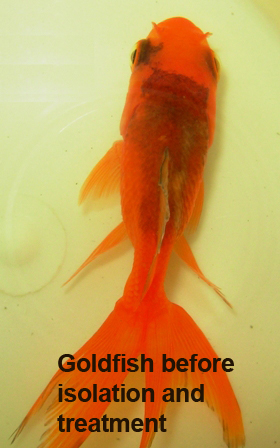
Last night, one of the snails died. I don’t know the cause. But we returned the other one to the dealer today. That’s two less oxygen-demanding, ammonia generating organisms in my tank as of now.
Regarding the overstocking of fish in my main aquarium, I confess that I have not yet returned some of the fish to the dealer. For the simple reason that I don’t want them to go back to those heartless dealers, into those poorly kept, overstocked tanks and get infected with God knows what else.
Yes, that does mean that my tank is going to cycle with so many fish in it. And the biggest problem is that we don’t get Nitrogen test kits in our area and I have no idea where to procure them in Mumbai. We’re also trying to prepare ourselves mentally for the loss of more fish. It’s tough. We still blame ourselves for the loss of the poor pleco and the fantail goldfish.
But nevertheless, we’re prepared to fight tooth and nail to prevent our fish from dying from ammonia/ nitrite toxicity.
This is how we’re going about it right now. I’m not saying this is the correct way of going about it, because what we’re doing is based upon what little we have read on the Internet over the past few days. And that is why I’m begging all the experts out there to help us out.
I considered adding commercially available beneficial bacteria (BB) but I don’t know where to obtain the same and how to use it. I don’t dare take any BB containing gravel/ used media/filter material from my friends or the aquarium dealer or my friends for fear of introducing other more dangerous parasites/ germs.
We’re doing 10% water changes everyday to remove any excess ammonia/ nitrites being formed in the aquarium. We’re also siphoning 1/3 of the gravel every alternate water-change to remove the poop and the other ammonia-generating stuff on the floor. We’re being careful not to overfeed the fish or let any excess food remain in the tank. Hopefully, all this will reduce the load of ammonia generating material in the tank.
My idea behind doing this is to keep the ammonia/nitrites levels just enough to stimulate the growth of the beneficial bacteria, and yet not too high to stress out and hurt the fish.
My reasoning may be flawed because I’ve also read that technically any amount of ammonia and nitrites is bad for the fish. But frankly, I’ve run out of options.
So far the fish are doing well.
But the fish may also be doing well because the ammonia/ nitrite levels have not yet spiked. My tank is just 2 weeks old. I dread to think what would happen if they do spike, which I suppose they will in the near future. I also fear that by these frequent water changes will remove the ammonia/ nitrites to the extent that the nitrosomonas and nitrobacter may not form at all.
I don’t know if I’m doing the right thing. Like I said, I’ve run out of options. Please…please let me know your feedback. :help2:
And let our experience be a lesson to all new aquarium owners and those intending to be one. Read everything possible about setting up and managing an aquarium before you set up one. After all you are going to be taking home these beautiful living beings which will depend on you for their survival, health and happiness. You don’t want to have the burden on your conscience of being the cause of their death. Like we have….
Also, please don’t fall prey to these parasitic aquarium dealers. When I mentioned the ammonia-nitrite-nitrate cycle to one of the dealers here, he looked at me like I had said something in Greek. :swear:
I suppose the laws regarding the sale of aquariums and fish are strict in western countries but in India, they don’t exist…or at least they do so only on paper. Most of the LFS here are run by dim-witted, ignorant assistants of selfish shop owners who only wish to make money from the sale of these lovely animals, regardless of how their fish fare, or survive.
Well, I thank you all for your patience in reading this rather lengthy post and I am desperately awaiting your replies.
Here are some pictures of my new aquarium and its surviving inhabitants (I'm praying that they continue to survive...)
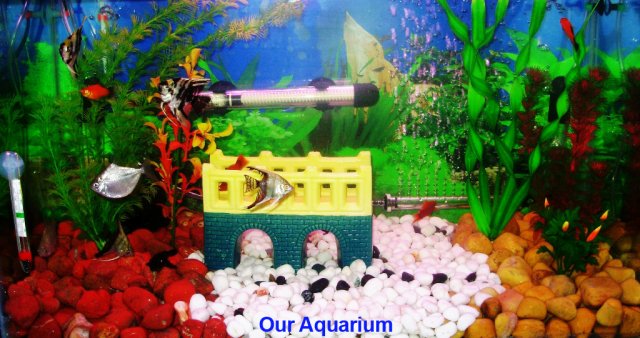
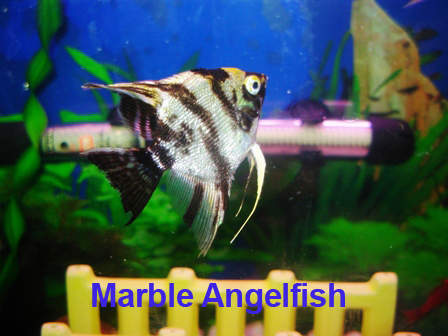
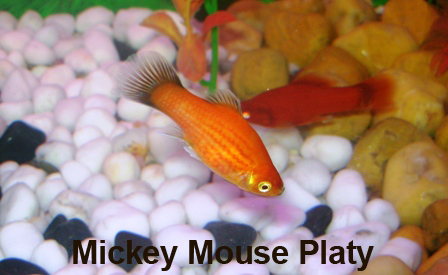
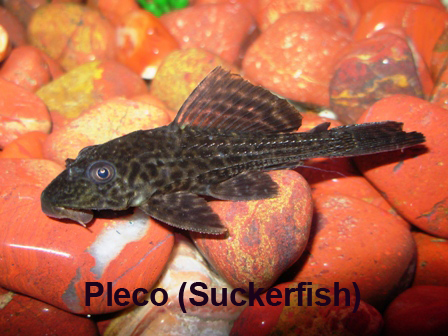
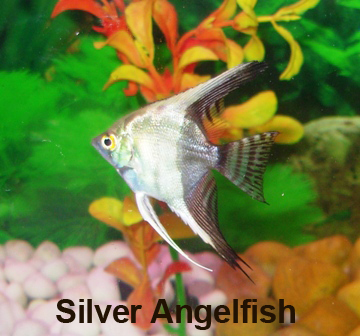
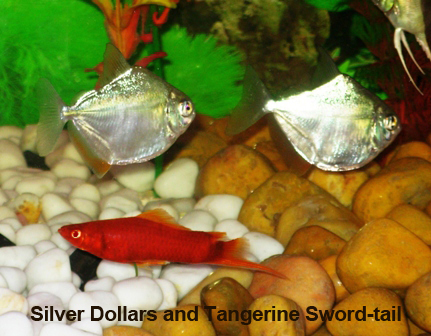
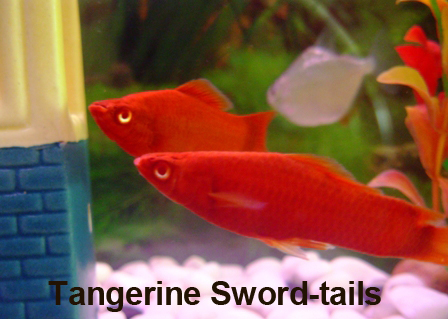








I am doing this post for 3 reasons:
1. To make sure that any newbies reading this post don’t go through, and put their fish through what we have. It’s likely that some of you may come across unscrupulous pet shop owners like we did.
2. To highlight some of the observations we have made from our experiences, which may be use to other newbies. And if our interpretations/ observations are incorrect, to request the experts on the forums to correct them.
3. To ask the experts on the forums if we’re going in the right direction. Most unfortunately, we have no personal access to any experts where we live. We are desperate to save our remaining fishes. :bowing:
We live in a rural town in India where there are only two aquarium dealers. I’m going to call them that because that’s what these two guys are. Just dealers. Genuine pet shop owners know about and care for pets!
Anyway, with no experience whatsoever in our family regarding pet-keeping, we were misled by some friends into believing that there was nothing to an aquarium, and that it was simply a glass box with some water and some fish in it. We were encouraged to just ‘go and get one today.’
And that’s what we did. On 1st November 2009, we went to one of the aquarium dealers in our town and he assured us that he would do the needful. We chose a 24 (length) x 15 (height) x 12 (depth) inch glass aquarium holding 16 gallons of water gravel, some plastic plants and a couple of decorations. With it came a sponge filter and an under-gravel filter, an air pump and aquarium lamp. There was no discussion on our prior experience, requirement for a heater, maintenance etc. And there was absolutely no talk of the foremost important procedure for a new aquarium i.e cycling of the tank.
Then with a brilliant smile, he waved his hand at the overstocked aquariums behind him and told us to choose whichever fish we wanted. There was no advice on which fish would be suitable for beginners, their ultimate adult size, the maximum inches of fish that we could out in our aquarium, their inter-breed compatibility, their specific care-needs etc. ‘Choose and thou shalt get!’ was his motto. Within minutes, he had sweet-talked us into buying 2 fantail goldfish, 2 plecos, 2 marble angelfish, 2 silver angelfish and 2 tangerine sword-tails. When I asked him if there were any specific instructions regarding any do’s and don’ts, he again waved his hand and said there wasn’t anything of note, and to call him in case anything was required.
His man then came over to our house, set up the glass box, did in a few seconds what was probably supposed to be the careful washing of the gravel, decorations and plastic plants. Then he put it all in. Then he took water freshly just taken from the tap, added a few drop of dechlorinator, did not even wait for the requisite 15 minutes and poured it into the box. Then he added all the above fish into the aquarium along with the same water they were transported in, from the shop. That’s TEN fish going into a brand-new, non-cycled aquarium, all at the same time!
I cringe at the memory of that action even today. He had also sold us a box of flake food and frozen worms. He told us to feed the fish twice a day, as much as they’d finish in 5 minutes.
The next day, we went to the other aquarium dealer in the town to get a few other decorations and to see if he had any more variety of fish. Even after listening to what we done, this man also conned us into buying further, 2 silver dollars, 2 mickey-mouse platys and 2 snails! Upon hesitatingly asking whether adding all these would be all right, this guy also smiled patronizingly and told us that our aquarium was a ‘big’ one and we could put in about 20-22 fish if we wanted!
I can imagine all you fish-lovers recoiling at this tragically true horror story.
The first two days were pure bliss for us. We would sit for hours watching and discussing the gorgeous fish swimming around in front of us. On the second day, we found ourselves amused at how some of them were cutely rubbing themselves on some of the hard decorations in the aquarium. Little did we know at that time, that this was one of the early signs of stress, and even worse, what was to follow next.
It was on the third day, that we noticed that our silver dollars looked like they were sprinkled with fine grains of salt. The goldfish followed suit. And so did the platys. The dreaded nemesis of new aquarium owners, the parasite Ich had struck. We were still not fully aware of the danger, we just knew something was wrong. We took the fish to the first dealer and after a cursory look he said that ‘sometimes these things happen. In fact they don’t have much’. He then told us that we should add a ‘handful’ of aquarium salt, a ‘few crystals’ of potassium permanganate, a few drops of methylene blue and that now ‘it was time’ to install a heater and turn up the temperature. He did not tell us the exact dose of the salt or pot. permanganate or the methylene blue.
On the 6th day, one of the plecos died. And on the 7th day, one of the goldfish died. For no apparent reason. The pleco didn't even have any white spots on him and the white spots on the goldfish were just 2 or 3 in number. We were morbidly horrified. We rushed to the dealers who casually told us, and I quote, ‘It’s normal for fish often die like that.’ (??!!!):mad2::mad2::mad2:
We contacted our friends and they also reported huge losses of fish, which they were also given to believe, is ‘normal’.
We decided that enough was enough. Then we decided to turn to the Internet for help. Something I confess, we should have done in the first place. Ignorance is all I can plead because we really did not know the wealth of information that exists on the topic. Besides, we had been assured by the dealers that they were experts and we should ‘leave it to them’ to look after things.
Everything we did was wrong. From the information on the Internet, I'm guessing those two poor fish died from ammonia toxicity. We felt responsible for the death of those beautiful fish. Needless to say, we felt like sh*t!!!:wall:
Then we decided to act proactive and do something to try and save our remaining fishes. We read up whatever we could find on the Internet on an emergency basis and took the following steps.
This is where I request all the experts to give their feedback whether we’re going in the right direction and what we can do further. :1zhelp:
What we have done over the last week:
We installed a thermometer and heater and turned up the temperature to 86 deg F. We’ve also added sea salt at 5-10 tsp dissolved in some water taken from the tank itself everyday. By tomorrow, we shall have achieved 2.5 tsp per gallon. We’ve watched the fish closely for signs of stress but they seem to love it. The Ich spots disappeared on all the fish within a couple of days. They recurred in the silver dollars and one platy after a couple of days but now they are gone and have not recurred. As advised in the posts on AC, we intend to keep this salt and temperature condition for a couple of weeks more to eradicate any surviving parasites. The fish are feeding well and are active.
One point of note (which all experts probably know anyway!) is that the active dots of Ich are white and well defined. They heal by become flatter, and the margins become more ill defined before disappearing completely.
I hooked up the pump/filter to alternate inverter-battery back up. We have heavy power cuts in these rural parts. Then I added a more powerful air pump for increasing the aeration, to compensate for the decreased oxygen availability caused by the raised temperature.
We isolated the second goldfish in a different tub immediately after the first one died because he too had started showing whitish patches on his back and dorsal fin. This ‘quarantine tub’ has a small air-stick/ bubble wall, but nothing else. We added salt to 2.5 tsp/gallon but there is no heating system. It also does not have gravel or any type of filter. Fortunately he is doing well. First all the whitish patches on his back turned black, which I believe is a sign of healing of ammonia burns. Now they too are slowly fading in colour. Here’s what he looked like about 5 days ago:

Last night, one of the snails died. I don’t know the cause. But we returned the other one to the dealer today. That’s two less oxygen-demanding, ammonia generating organisms in my tank as of now.
Regarding the overstocking of fish in my main aquarium, I confess that I have not yet returned some of the fish to the dealer. For the simple reason that I don’t want them to go back to those heartless dealers, into those poorly kept, overstocked tanks and get infected with God knows what else.
Yes, that does mean that my tank is going to cycle with so many fish in it. And the biggest problem is that we don’t get Nitrogen test kits in our area and I have no idea where to procure them in Mumbai. We’re also trying to prepare ourselves mentally for the loss of more fish. It’s tough. We still blame ourselves for the loss of the poor pleco and the fantail goldfish.
But nevertheless, we’re prepared to fight tooth and nail to prevent our fish from dying from ammonia/ nitrite toxicity.
This is how we’re going about it right now. I’m not saying this is the correct way of going about it, because what we’re doing is based upon what little we have read on the Internet over the past few days. And that is why I’m begging all the experts out there to help us out.
I considered adding commercially available beneficial bacteria (BB) but I don’t know where to obtain the same and how to use it. I don’t dare take any BB containing gravel/ used media/filter material from my friends or the aquarium dealer or my friends for fear of introducing other more dangerous parasites/ germs.
We’re doing 10% water changes everyday to remove any excess ammonia/ nitrites being formed in the aquarium. We’re also siphoning 1/3 of the gravel every alternate water-change to remove the poop and the other ammonia-generating stuff on the floor. We’re being careful not to overfeed the fish or let any excess food remain in the tank. Hopefully, all this will reduce the load of ammonia generating material in the tank.
My idea behind doing this is to keep the ammonia/nitrites levels just enough to stimulate the growth of the beneficial bacteria, and yet not too high to stress out and hurt the fish.
My reasoning may be flawed because I’ve also read that technically any amount of ammonia and nitrites is bad for the fish. But frankly, I’ve run out of options.
So far the fish are doing well.
But the fish may also be doing well because the ammonia/ nitrite levels have not yet spiked. My tank is just 2 weeks old. I dread to think what would happen if they do spike, which I suppose they will in the near future. I also fear that by these frequent water changes will remove the ammonia/ nitrites to the extent that the nitrosomonas and nitrobacter may not form at all.
I don’t know if I’m doing the right thing. Like I said, I’ve run out of options. Please…please let me know your feedback. :help2:
And let our experience be a lesson to all new aquarium owners and those intending to be one. Read everything possible about setting up and managing an aquarium before you set up one. After all you are going to be taking home these beautiful living beings which will depend on you for their survival, health and happiness. You don’t want to have the burden on your conscience of being the cause of their death. Like we have….
Also, please don’t fall prey to these parasitic aquarium dealers. When I mentioned the ammonia-nitrite-nitrate cycle to one of the dealers here, he looked at me like I had said something in Greek. :swear:
I suppose the laws regarding the sale of aquariums and fish are strict in western countries but in India, they don’t exist…or at least they do so only on paper. Most of the LFS here are run by dim-witted, ignorant assistants of selfish shop owners who only wish to make money from the sale of these lovely animals, regardless of how their fish fare, or survive.
Well, I thank you all for your patience in reading this rather lengthy post and I am desperately awaiting your replies.
Here are some pictures of my new aquarium and its surviving inhabitants (I'm praying that they continue to survive...)

















